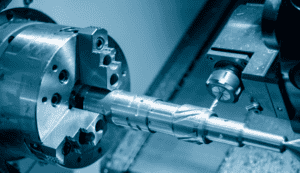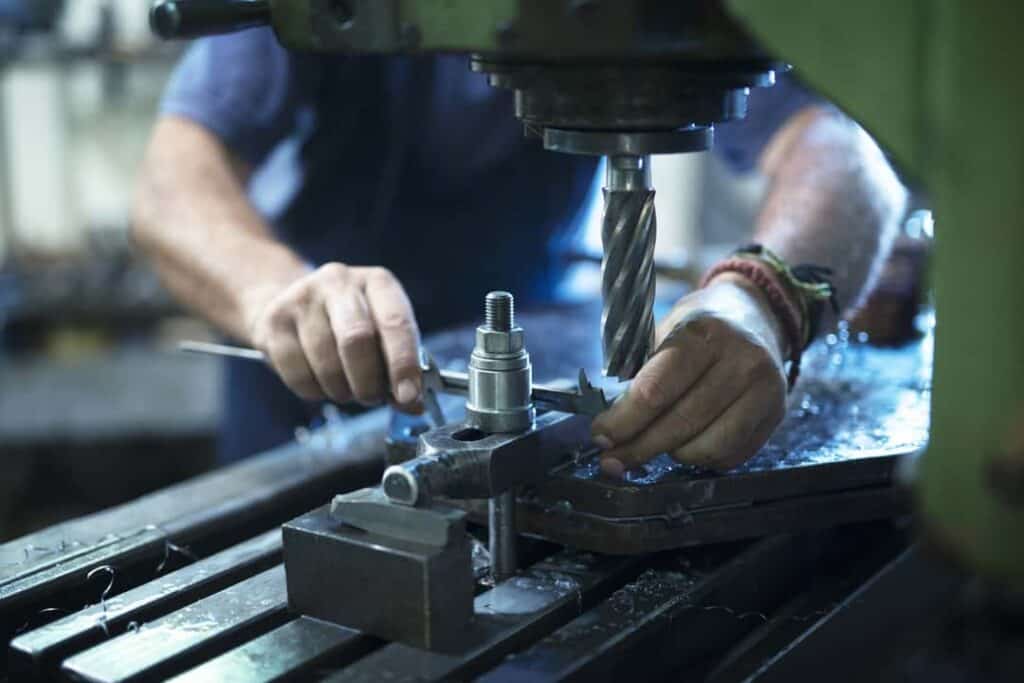In the fascinating world of manufacturing, precision machining stands as the cornerstone of turning raw materials into intricately designed components. At the heart of precision machining are two key processes: CNC turning and CNC milling. For beginners stepping into the realm of machining, understanding these processes is crucial. This comprehensive guide aims to demystify CNC turning and milling, providing insights into their principles, applications, and the fundamental differences that make them indispensable in modern manufacturing.
Introduction
1. The Essence of Precision Machining
Precision machining involves the removal of material from a workpiece to achieve the desired shape and size. This process is crucial in manufacturing industries ranging from aerospace to healthcare, where intricate components are a necessity.
2. CNC Revolutionizes Machining
CNC, or Computer Numerical Control, has revolutionized precision machining by automating and refining the process. CNC machines utilize programmed instructions to control the movement of cutting tools, resulting in unparalleled accuracy and efficiency.
CNC Turning: The Basics

1. Understanding CNC Turning
CNC turning is a machining process where a workpiece rotates on a spindle, and a cutting tool is brought into contact with the rotating material to create cylindrical shapes. This process is ideal for components like shafts, bolts, and bushings.
2. Key Components of CNC Turning
- Lathe Machine: The primary tool for CNC turning, the lathe holds and rotates the workpiece.
- Chuck: The chuck secures the workpiece to the lathe spindle.
- Cutting Tool: The cutting tool, positioned on the tool turret, shapes the rotating workpiece.
3. CNC Turning Process Steps
- Workpiece Setup: Secure the workpiece in the chuck.
- Tool Selection: Choose the appropriate cutting tool.
- Programming: Develop a CNC program specifying toolpaths and machining operations.
- Toolpath Execution: The CNC machine executes the programmed toolpaths to shape the workpiece.
CNC Milling: The Basics
1. Understanding CNC Milling
CNC milling involves the removal of material from a workpiece using rotary cutters. This process creates complex shapes, contours, and features. CNC milling is suitable for producing components like gears, brackets, and intricate molds.
2. Key Components of CNC Milling
- Mill Machine: The mill machine holds and moves the workpiece.
- Cutter: The cutter, typically with multiple teeth, removes material as it rotates.
- Worktable: The worktable holds the workpiece in place during milling operations.
3. CNC Milling Process Steps
- Workpiece Setup: Affix the workpiece to the mill machine worktable.
- Cutter Selection: Choose the appropriate cutter for the desired outcome.
- Programming: Develop a CNC program specifying toolpaths and milling operations.
- Toolpath Execution: The CNC machine executes the programmed toolpaths, shaping the workpiece in three dimensions.
Applications of CNC Turning and Milling
1. CNC Turning Applications
- Shaft Production: CNC turning excels in creating cylindrical shapes like shafts with precision.
- Bushings and Bearings: Components requiring concentric features benefit from CNC turning.
- Threaded Parts: Threads on bolts and screws are efficiently produced through CNC turning.
2. CNC Milling Applications
- Complex Components: CNC milling is ideal for creating intricate and complex shapes.
- Prototyping: The versatility of milling makes it suitable for rapid prototyping.
- Mold Making: The precision of CNC milling is invaluable in creating moulds for manufacturing.
Differences Between CNC Turning and Milling
1. Primary Motion
- CNC Turning: In turning, the primary motion is rotational, with the workpiece spinning on a lathe.
- CNC Milling: Milling involves linear and rotary motions, as the cutter moves along multiple axes.
2. Tool Orientation
- CNC Turning: The cutting tool approaches the workpiece radially.
- CNC Milling: The cutter engages the workpiece axially and radially, allowing for versatile machining.
C. Workpiece Shape
- CNC Turning: Primarily used for creating cylindrical shapes.
- CNC Milling: Suitable for producing a wide variety of shapes, including slots, pockets, and complex contours.
Choosing Between CNC Turning and Milling
1. Consideration Factors
- Geometry of the Part: Choose turning for cylindrical shapes and milling for intricate geometries.
- Material Type: Consider the material properties, as some materials may be better suited for turning or milling.
- Production Volume: For high-volume cylindrical parts, turning may be more efficient, while milling is versatile for low to medium volumes.
2. Hybrid Machining
Some projects may benefit from a combination of CNC turning and milling processes. This hybrid approach allows manufacturers to leverage the strengths of both processes for optimal results.
Advantages and Challenges
1. Advantages
- CNC Turning:
- Efficient for cylindrical parts.
- Faster production for high-volume jobs.
- CNC Milling:
- Versatile for complex shapes.
- Suitable for low to medium production volumes.
2. Challenges
- CNC Turning:
- Limited in creating complex shapes.
- Less suitable for prototyping.
- CNC Milling:
- Slower for high-volume cylindrical parts.
- Requires advanced programming skills.
Future Trends in CNC Machining
1. Integration of Artificial Intelligence
AI is poised to play a significant role in CNC machining, optimizing toolpaths, predicting maintenance needs, and enhancing overall efficiency.
2. Hybrid Machines
Advancements in machining technology may lead to the development of hybrid machines that seamlessly integrate turning and milling capabilities, offering manufacturers increased flexibility.
3. Sustainability in Machining
The industry is increasingly focusing on sustainable machining practices, exploring eco-friendly materials and energy-efficient processes.
Conclusion
Unveiling the World of CNC Turning and Milling
Precision machining, through CNC turning and milling, is the backbone of modern manufacturing. This beginner's guide has unveiled the principles, applications, and distinctions between these processes, providing a foundation for those venturing into the intricate world of CNC machining.
A Journey of Exploration and Innovation
As CNC technology evolves, the journey of exploration and innovation continues. Whether shaping cylindrical components through turning or crafting complex geometries with milling, CNC machining opens a realm of possibilities, laying the groundwork for the future of precision manufacturing.

